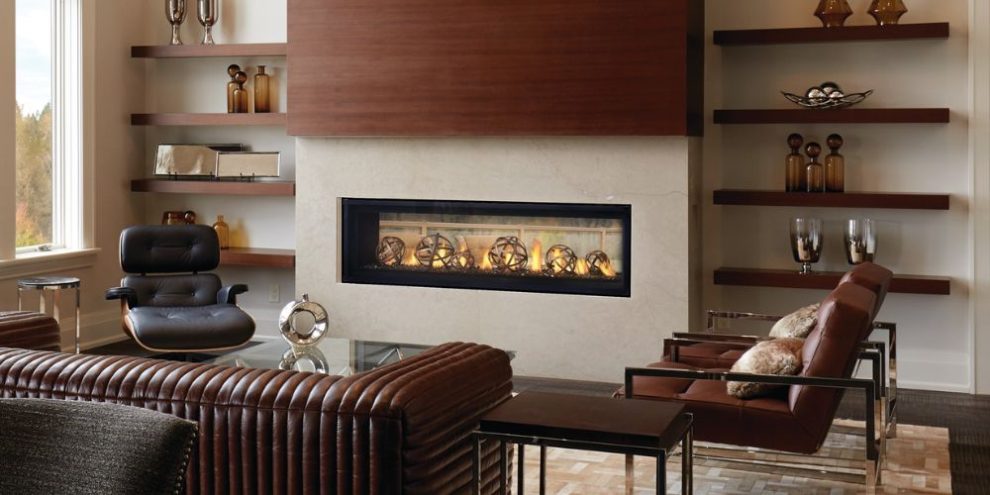
This Barrie 360 feature is brought to you by Napoleon Home Comfort.
As the weather gets colder, staying warm and cozy is on most people’s minds. While simply turning up the heat would be an easy way to achieve this goal, it isn’t always an option. And sure … your home could probably use a window replacement, updated siding, or new insulation to help you stay warm and save on energy. But the reality is ... those renovations aren’t in everyone’s budget!
In fact, for many homeowners, the prospect of achieving that perfect balance between comfort and affordability can be a daunting task.
The good news is that you don't need a bottomless budget to make your home a haven of warmth this winter. There are lots of easy ways you can save energy before the freezing temperatures are upon us.
So, if you’re a homeowner (or even a renter) looking to make your house a warm and inviting retreat this season, read on to discover how you can make it happen without breaking the bank.
RELATED: 9 ways to make your backyard an oasis this fall (or any time of year) ...
1. Seal Those Drafts
Before delving into major upgrades, let's start with the fundamentals. Begin by checking for drafts around windows and doors, as even small gaps can allow precious warmth to escape. Seal these openings with weatherstripping or caulk to effectively keep the cold at bay while preserving the cozy interior temperature.
But don’t stop after you’ve sealed up your windows and doors.
Drafts have a cunning way of infiltrating your home through unexpected routes, such as electrical outlets and switches on exterior walls, as well as around pipes. Combat these tiny gaps with foam, gaskets, or insulating pads. This will ensure that cold air doesn't sneak in, maintaining a warmer indoor environment.
Another often-forgotten entry point for drafts is the attic access. An uninsulated attic hatch or door can be a significant source of warm air loss and cold air intrusion. Take measures to seal and insulate it using weatherstripping or a pre-made attic hatch cover.
This simple step will help you better maintain a consistently comfortable temperature throughout your home and save on energy throughout the colder months.
2. Invest In A Programmable Thermostat
Investing in a programmable thermostat can be a game-changer when it comes to controlling your home's temperature efficiently and cost-effectively.
With a programmable thermostat, you gain the power to create customized temperature schedules that align perfectly with your daily routine. During those times when you're away from home or cozily tucked into bed, you can automatically lower the thermostat setting. This reduction in temperature during periods of inactivity ensures that you're not expending unnecessary energy to heat an empty house or maintain an overly warm bedroom.
As a result, you're not only reducing your carbon footprint but also cutting down significantly on your heating costs so you can save money and energy.
3. Update Your Furnace
Upgrading your furnace is one of the most significant ways to enhance comfort and energy savings during the chilly winter months. While it may seem like a substantial upfront investment, the long-term benefits can greatly outweigh the initial cost.
One of the key advantages of upgrading to a modern furnace is the increased efficiency it offers. These newer models are engineered to operate with remarkable efficiency, utilizing advanced technology and design features to extract more heat from the same amount of fuel. This means they produce more warmth for every unit of energy consumed, ultimately leading to lower heating bills over time.
If you choose a high-efficiency model, the furnace will consume less energy to maintain your desired indoor temperature. By upgrading, you can reduce your overall energy consumption, which not only benefits your wallet but also contributes to a greener and more sustainable household.
4. Upgrade Your Water Heater
Your water heater works hard year-round, but it can be especially energy-hungry during the winter when you need hot showers and baths to warm up. Fortunately, there's a smart and energy-efficient solution to address this issue: tankless or on-demand water heaters.
Traditional water heaters use large tanks that continuously heat and store water, which means they are constantly using energy to maintain a reservoir of hot water, even when you're not using it. This can result in substantial energy wastage, especially during the winter when you're likely to use more hot water.
Tankless or on-demand water heaters operate differently. They heat water on the fly, delivering hot water only when you turn on the tap. There's no need to keep a large tank of water constantly heated, which means there's significantly less energy waste. This approach not only reduces your energy consumption but also leads to lower energy bills.
5. Plant Windbreaks
Planting trees or bushes around your house can help keep it warmer in the winter. These plants act as shields, stopping the cold wind from getting inside your home and making the area around your house more comfortable during the cold months.
To make this work, you should pick the right kinds of trees and bushes for your area. Plant them on the side of your house where the wind usually comes from. Give them enough space, and make sure to take care of them so they stay healthy. By doing this, you not only save energy but also make your home and surroundings more comfortable.
Depending on the types of trees you plant, it may be a few years before they are the right size to protect your home. Popular trees to plant in fall include:
- Spruce
- Pine
- Maple
- Linden
- Crabapple
Of these, spruce and pine are the best for windbreaker trees. Boxwoods, yew, and holly are also good options if you're looking for hedge-like windbreakers.
6. Install Ceiling Fans (Or Reverse Your Current Ones)
Did you know that ceiling fans aren’t just for cooling off in the summer?
With a simple adjustment, you can harness its heating potential all winter long. All you have to do is switch the fan's direction to rotate clockwise. This is usually done using a pull cord or switch on the ceiling fan itself.
Once you have changed the direction, it will move the warm air that tends to collect near the ceiling into your living space.
As this warmer air descends, it mixes with the cooler air in the room, creating a more consistent and comfortable temperature throughout. This circulation of air can help you feel warmer without needing to crank up the thermostat, which ultimately translates to energy savings and lower heating costs.
This is especially effective in rooms with high ceilings where the warmer air gathers near the top, leaving the lower areas feeling cooler.
7. Use Window Dressings And Treatments
Window treatments offer simple yet effective ways to enhance your home's comfort during the cold season. And there are a few different options to choose from.
Curtains: Heavy curtains, when chosen and used strategically, act as an additional layer of insulation. They form a protective shield when drawn at night or during chilly days, trapping warm air inside and keeping the cold air outside. On sunny days, you can open them up to take advantage of the sun's natural warmth to reduce your heating needs and save on energy.
Blinds: Cellular or honeycomb blinds provide yet another layer of insulation with their unique design, creating pockets of trapped air that act as insulators. This added thermal protection helps maintain a consistent indoor temperature and eases the workload on your heating system.
Window Shrink Insulation Film: Window shrink insulation film, often referred to simply as shrink film or window shrink film, is a highly effective and economical solution for improving the energy efficiency of your windows during the cold winter months. This type of insulation involves applying a transparent plastic film to the interior window frames, which is then heated to create a tight, insulating seal.
Window Tint and Privacy Film: In older or less energy-efficient windows, a significant amount of heat can be lost through the glass panes. Window tint and privacy film act as a barrier, inhibiting heat loss by minimizing the direct transfer of thermal energy through the glass. By mitigating heat loss, these films help maintain a consistent and comfortable temperature inside your home without requiring higher thermostat settings.
8. Install A Fireplace
Whether you are looking for an alternative to your wood-burning fireplace, upgrading an old insert, or installing a new fireplace, gas and electric units are a great option for adding more efficiency and warmth to your home. These modern alternatives offer a plethora of benefits, making them an attractive choice for homeowners seeking efficient and hassle-free heating options.
Unlike wood-burning counterparts, gas and electric fireplaces don't rely on the combustion of logs, which can produce inconsistent heat and require constant attention. There's also no need to chop, store, or haul firewood, and you won't have to deal with ash cleanup or smoke-related issues. This not only saves you time and effort but also makes these fireplaces a safer and cleaner heating option.
In addition, gas and electric fireplaces are versatile in design, offering a wide range of styles and sizes to match your home's aesthetic. Whether you prefer a sleek, modern look or a classic, rustic feel, you can find a fireplace that complements your interior decor seamlessly.
When it comes to energy savings, gas fireplaces tend to be more cost-effective compared to electric ones, as natural gas and propane are often less expensive than electricity. However, electric fireplaces have their advantages too, such as the ability to zone heat specific areas of your home without central heating. This can result in energy savings by heating only the rooms you're using, rather than your entire house.
How To Save Energy In The Winter
As you prepare your home for the winter chill, remember that even small changes can add up to significant savings over time. By implementing these cost-effective home upgrades, you'll not only stay warm and comfortable but also keep more money in your pocket. So, embrace these energy-saving strategies, and make your home a winter retreat without the financial strain.













